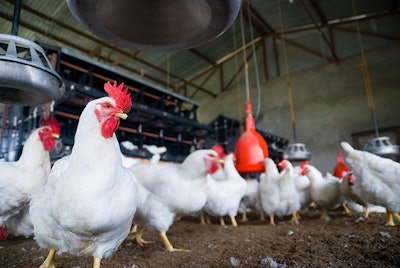
Ascites syndrome is best characterized by the accumulation of fluid in the body cavity of poultry. It represents a spectrum of physiological and metabolic changes including pulmonary hypertension that can lead to heart failure, increased blood pressure in the veins and excessive build-up of fluid in the liver that leaks into the body cavity.
The non-infectious condition occurs in broiler chickens, turkeys, guinea fowls and ducks, but is most common in male broiler chickens.
Ascites syndrome has a large financial impact on poultry farmers globally. In 2009, it was estimated that 5% of the 40 billion broilers produced worldwide died of ascites, costing the industry more than $40 billion per year. Improvements in genetic selection, incubation, precision nutrition, ventilation and other areas have dramatically reduced the incidence of ascites syndrome in modern day broilers, resulting in a decrease in the mortality rate.
What is the cause?
Ascites syndrome was originally associated with high altitudes.
At high altitudes, the oxygen level is lower than at sea level. As a result, the hearts of broilers raised at high altitudes must push harder to get blood through the lungs where oxygen exchange occurs. Because the lung volume and cardiovascular volume within the lung tissue is fixed, eventually a point is reached where the lungs can no longer accommodate more blood being supplied by the heart. This is the starting point for heart failure and causes an accumulation of fluid in the abdominal cavity.
However, in recent years, there has been an increased level of incidence at sea level, making some researchers propose alternate causes such as infections, toxins and metabolic disorders.
Some treatment options
Several interventional measures related to feed and nutrition can help reduce the incidence of ascites syndrome in broilers. Although there is no ‘one-size-fits-all’ approach, a combination of several of these actions can typically help:
- Reduced feed intake
- Early switch to grower-finisher diets
- Skip-a-day feed regime
- Meal versus pellet diets
- Vitamin C and E
- Sodium biocarbonate
- Coccidiostats
- Acetylsalicylic acid
- Feed protein
- Arginine


















